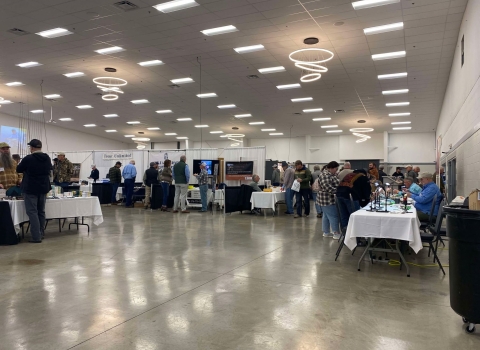Coastal areas are often challenging places for plants to grow due to sandy soils and exposure to salt and wind. Native plant species that are adapted to these conditions play an important role in creating specific habitats for other unique coastal species. Sometimes an invasive species invasive species
An invasive species is any plant or animal that has spread or been introduced into a new area where they are, or could, cause harm to the environment, economy, or human, animal, or plant health. Their unwelcome presence can destroy ecosystems and cost millions of dollars.
Learn more about invasive species can move in and alter the ecosystem. At Crook Point, yellow bush lupine is an invasive shrub that was introduced and quickly spread. Now, managers at Oregon Coast National Wildlife Refuges are addressing this problem through a multi-year project that started in 2020 with the removal of the majority of the old-growth yellow bush lupine plants.
Yellow bush lupine (Lupinus arboreus) is an invasive shrub found growing throughout Southern Oregon’s coastal dune communities. Originally introduced as a dune stabilizer, this plant quickly spread and altered the native landscape. Yellow bush lupine increases nitrogen in the soil which makes it easier for other weed species to flourish along with it and the weed communities can quickly take over. Yellow bush lupine will also hybridize with the native seashore lupine (Lupinus littoralis), producing intermediate sized plants with a mixture of purple, yellow, and white flowers.
Native seashore lupine is the native version of this plant, that is adapted to this area and naturally occurs alongside other native plants. Native plants in general are more beneficial to local pollinators and live in unison with this plants around them. They have natural predators and are a natural part of the existing ecosystem.
Amongst other duties related to the Crook Point Coastal Prairie Restoration project, Biological Science Technician, Samantha Luginbuhl, has spent this summer cutting and treating yellow bush lupine and yellow bush lupine hybrids at the Crook Point to prevent further establishment and to protect the native seashore lupine population found at the site.




